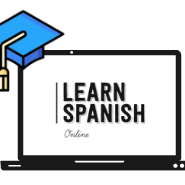
I have been an SFL (Spanish as a foreign language) teacher for several years now. However, there were a number of situations that had me very frustrated with some students. Normally we, language teachers, have 2 hours a week to teach our language, but I felt that this time was not enough because the students did not understand everything, they remembered very little of what we had done in the previous lessons. They did know the grammatical rules, but they were not able to speak.
In conclusion, I felt that I was wasting my time and theirs because there was something not quite working, even though we did everything that was in our textbook. Sure, some students succeeded, but always, as a teacher, you want to reach everyone: the motivated, the unmotivated. And I couldn’t.
I started to look for different methods that would help me to enhance my classes. I accept that there are many methods to learn foreign languages, but after I started my training at TPRSCI, I made a big change in my classes. I am going to tell you what it is, so you know how I am going to teach you.
First, what does CI stand for? It means Comprehensible Input. Stephen Krashen in the 80’s created the theory of foreign language acquisition and within this theory there is a hypothesis called comprehensible input. The theory goes like this: in order for a language to be acquired naturally, learners need an enormous amount of comprehensible input.
Where do we get that input when we don’t live in the place where the language we want to learn is spoken?
We can read, listen, look at different resources in Spanish, but it must be understandable to us in order to acquire it. This process must be similar to the acquisition of the first language when we are babies. Then, we must help ourselves not only with verbal communication, but also with non-verbal communication: gestures, indications, speaking slowly and repeating many times.
The hypothesis also mentions that, just as we do not need grammar as a central point in the acquisition of the first language, we do not need it for the following languages. Another important point of the hypothesis is that we acquire the language when we understand it, even if there are words we do not know, if we understand the message, we will acquire the unknown word.
A very important word within this hypothesis is acquisition, which is the process by which involuntarily words and structures enter our brain activating the language acquisition device. An interesting aspect of the acquisition process is that we work with long-term memory. This is different from what we do when we learn a language by making a conscious effort to learn and understand the functioning of each part of the language.
I will now explain what TPRS stand for. It is Teaching Proficiency through Reading and Storytelling. Mainly, it is the way we implement the principles of language acquisition proposed by Krashen in the classroom through the creation of memorable, contextualized and interesting stories that build a safe and comfortable atmosphere for acquisition.
After all this theory I can tell you that with TPRSCI it is much more motivating for students, regardless of age, to acquire foreign languages and for me as a teacher as well. To acquire SFL with TPRSCI is like having the perfect ingredients of the recipe: stories, motivation, autonomy, relatedness and competence.
